
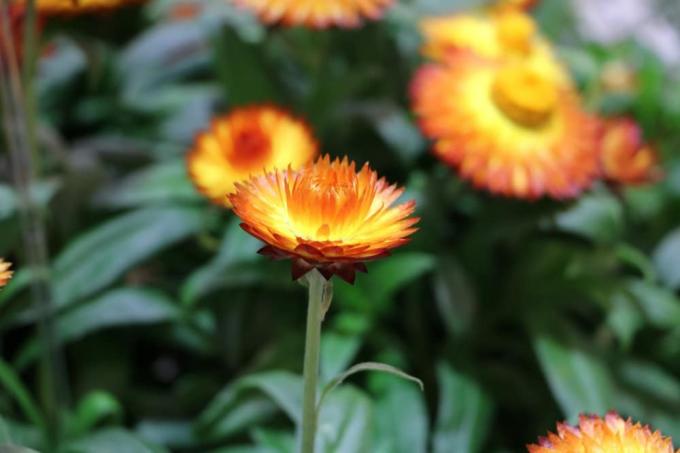
Table of contents
- location and substrate
- watering and fertilizing
- Cut
- hibernate
- multiply
- Sowing behind glass
- direct sowing
- dry
- Conclusion
Exhilarated, it spreads a good mood in the bed and on the balcony. The garden helichrysum adorns the cottage garden with its smart charisma and fires the imagination for the design of magnificent dried bouquets. After a tireless flowering from May to October, it will be happy to come back next year after a frost-free winter in the bucket. In view of these many talents, the little jack of all trades has already made it onto the throne of the 'Balcony Plant of the Year'. These care tips reveal what is important for the successful cultivation of a Helichrysum bracteatum.
location and substrate
The garden helichrysum spreads its cheerful, colorful floral flair wherever it is bathed in full sunlight for most of the day. She likes to stretch her rustling flower heads to the sky in air-washed layers, where she can dry off quickly after a summer rain. Varieties that aim high with a growth height of 100 centimeters are happy about the support of a garden fence or a sunny wall. Small cultivars unfold their blooms not only in the classic cottage garden, but fit in harmoniously in rock and gravel gardens, as long as the soil here is not too lean is constituted.
- Full sun location
- Humus, nutrient-rich soil
- Well-drained soil with a light moisture content
Planted directly in the bed, the lifespan of a Helichrysum bracteatum is limited to one summer. Since Mother Nature has endowed it with the potential for perennial cultivation, prudent hobby gardeners prefer to plant the summer flower in tubs and window boxes. Here it thrives in commercially available potting soil, which is ideally optimized with a little sand or perlite.
watering and fertilizing
Another mainstay of the successful care of a garden helichrysum is the professional water and nutrient supply. While their thirst is limited, their need for food is comparatively high. How to handle it correctly:
- Strawflowers prefer mild humidity
- Water moderately when the substrate surface has dried
- Pour the water directly onto the root area
- Protect from aimed fire with ice-cold water from the hose
- Fertilize weekly from May to October with 2 ml of liquid fertilizer per liter of irrigation water
- Work compost and horn shavings into the soil regularly in the bed
In order to meet the nutrient requirements without having to worry about it every week, slow-release fertilizers serve as a sensible alternative. These depot supplements are available in the form of sticks, granules, or small cones. These fertilizers supply a garden helichrysum with all the important minerals and trace elements for 6-8 weeks, so that three doses per season are sufficient.
Tip:
Repeated pruning of faded flowers and leaves encourages the growth of new, lush bud sites.
Cut
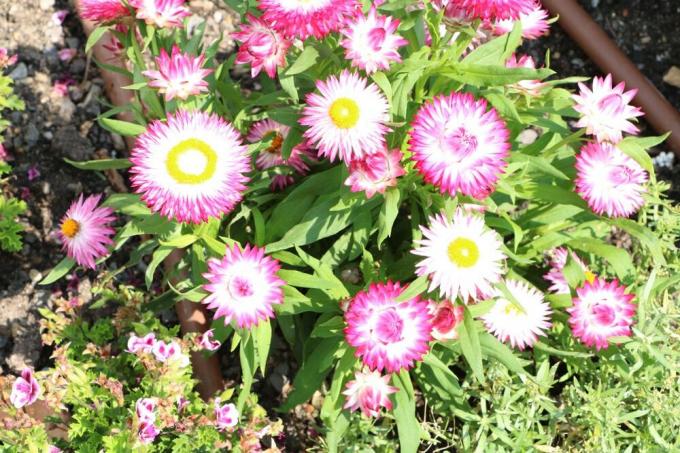
If you have given the straw flowers a function as a dried flower in a colorful bouquet or arrangement, the stems are cut when the flower heads are just opening. These unfold completely in the course of drying. If, on the other hand, your Helichrysum bracteatum has the task of embellishing the garden for as long as possible, they should only be cut down to the ground when the flowers have completely faded, or when the first frost put an end to the dream of blossoms.
hibernate
Cultivated in a planter, there is a good chance that the garden immortelle will overwinter in order to repeat the flowering splendor next year. The following aspects are relevant:
- Put the bucket or balcony box in good time before the first forest
- The winter quarters are light and cool with temperatures of 5-10 degrees Celsius
- An unheated stairwell, a bedroom or the frost-free, bright garage is ideal
- Do not let the substrate dry out during the winter
- There is no fertilization in this phase
Leave the withered inflorescences on the plant through the winter. Cut off the stems close to the ground just before new shoots appear next spring.
multiply
Sowing is considered an uncomplicated method of propagating garden immortelle. You have the choice between growing indoors in March or direct sowing in May. Specimens grown behind glass score with a considerable growth advantage, the Helichrysum bracteatum endows with a robust resistance to diseases and pests. Both procedures are explained in more detail below:
Sowing behind glass
In March, the local light conditions have brightened up enough for sowing the seeds to begin. In the weeks and months before, it was still so dark even at the south window of the house that seedlings withered within a short time because they desperately stretched out for every ray of light. How to sow:
- Fill a seed tray with peat sand, coconut fiber, perlite or commercial seed soil
- Mix the fine seeds with sand and scatter
- Sieve about 1 centimeter thick with substrate or vermiculite
- Moisten with a fine spray from the spray bottle
Placed in a bright, warm window seat, germination starts within 14-21 days at 15-18 degrees Celsius. Again, no cover in the form of glass or foil, because a humid and warm microclimate is unfavorable here. As soon as an urgent tightness develops in the seed jar, the weakest seedlings are sorted out. If all seedlings have developed magnificently, it should be worth separating them into individual pots. Placed in lightly fertilized pricking soil, continue to care for your pupils in it until they move to the bed after the ice saints.
direct sowing
Where sowing indoors does not seem practical, direct sowing in the bed comes into focus. The days and weeks after the Ice Saints in mid-May are a good choice of dates. The workflow looks like this:
- At the selected location, loosen the bed soil 20 centimeters deep
- Remove roots, stones and weeds from the soil until it is finely crumbly
- Spread a 5 cm layer of sifted compost and work it in with the rake
- Spread the helichrysum seeds widely, rake in and spray gently
Spread a close-meshed net to protect the seeds. Before, during and after germination, prudent home gardeners keep sprouting weeds under control so they don't overgrow delicate seedlings. When the plantlets have grown to a height of 5 centimetres, the weaker straw flowers are sorted out. A planting distance of 20 centimeters is considered ideal.
dry
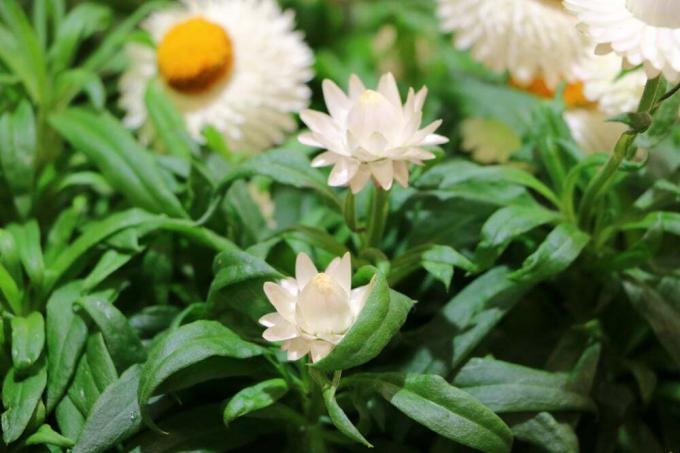
As a dried flower, the garden helichrysum retains its summery radiance for many years. The cheapest and most uncomplicated method is air drying. To do this, cut the flowers that are not yet fully open in the afternoon hours when the morning dew has lifted. Loosely tied with raffia, hang the flowers in small bouquets upside down in a warm, dry place. The darker it is here, the less the colors stay out. As the drying process progresses, pull the tape a little as the stems lose moisture. The shelf life is optimized if you spray the dried flowers with hairspray at the end of the process. An elegant way to dry straw flowers is to use one part glycerine and two parts water. Place the Helichrysum bracteatum in a vase for 2-4 weeks in this mixture, which will spread into the stems, flowers and leaves. The result is slightly shimmering and flexible dried flowers.
Conclusion
Nobody can resist her cheerful charm. The garden helichrysum impresses with multifaceted talents, such as an almost infinitely long blossom, undemanding care and easy propagation. Not to forget the decorative value as a dried flower in magnificent farmer's bouquets and flower arrangements. There is a place for the colorful all-rounder in every garden, as long as it is sunny enough there. The joy of the colorful flower heads does not have to be limited to one year, because frost-free overwintering in the bucket is quite possible.
 garden editorial
garden editorial I write about everything that interests me in my garden.
Learn more about summer flowers
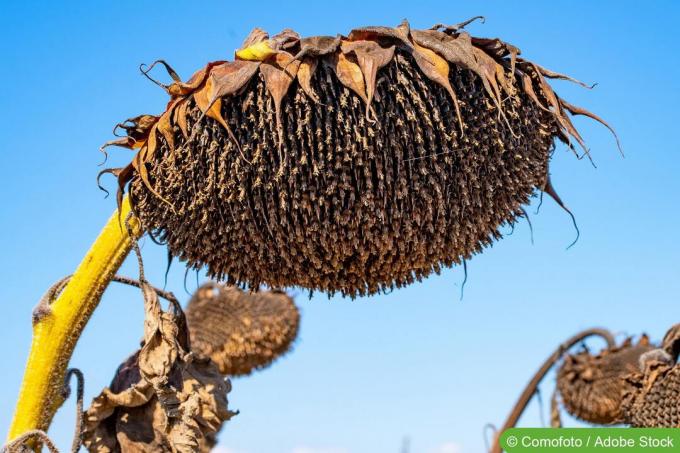
Should you cut off faded sunflowers?
Sunflowers bloom for a long time, but unfortunately not forever. Is it better to cut off the faded flowers or let nature take its course? Both are possible! It depends on the sunflower species and what you want to do with the ripening seeds. Read here whether you should cut off faded sunflowers.
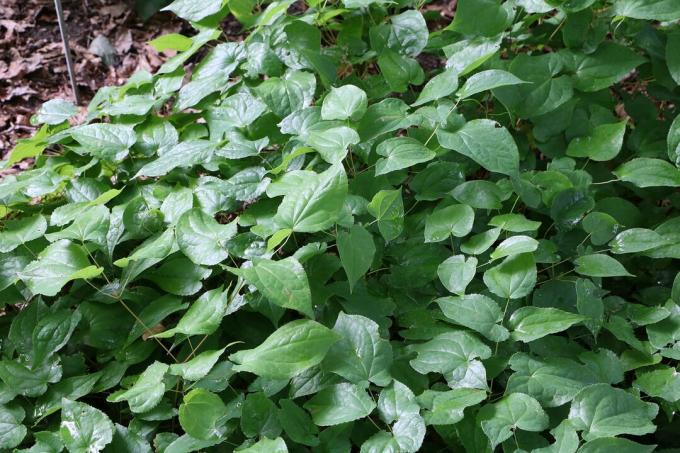
Elf Flower, Epimedium: 12 Tips for Grooming & Pruning
The elf flower transforms shady locations into a sea of flowers. Delicate flowers appear in white, yellow, pink, red or violet. The ground cover with the heart-shaped leaves is also decorative when not in bloom. We have put together the most important care tips for you.

Liver Balm, Ageratum: 10 tips for care
The leather balm is a daisy family that comes from Central and South America. In our latitudes, liver balm has been very popular for a long time, because here the plant does the trick not only a great figure as a gap filler between different perennials, but also in the form of one carpet of flowers.
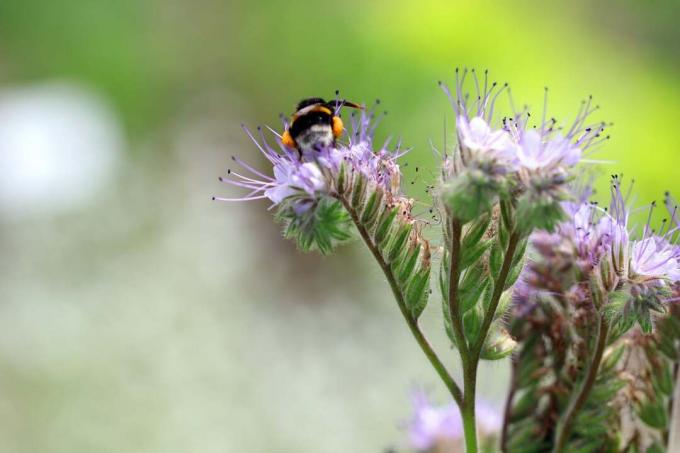
Bee friend, Phacelia: 8 tips for care
The cultivation of the tufted flower is not particularly difficult, because the plant turns out to be undemanding and easy to care for. If you take into account the basic requirements of this flowering perennial, you will benefit from its positive effects on biodiversity and soil conditions.
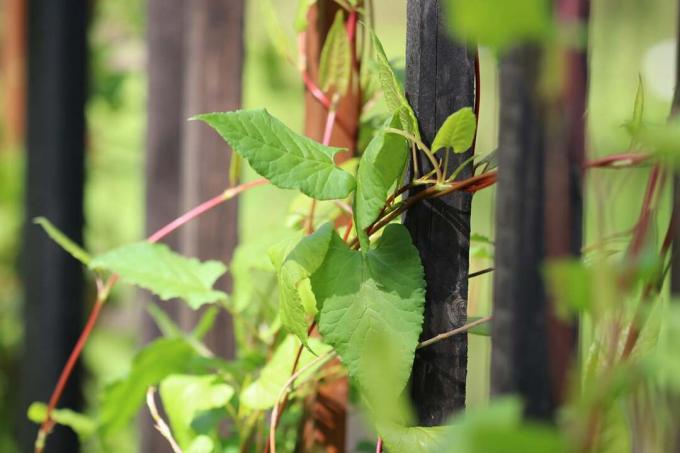
Climbing knotweed, Fallopia baldschuanica: Care from A – Z
A popular bee pasture but also a fast-climbing plant in the garden is the climbing knotweed. The plant should therefore be cultivated in the garden with some caution and appropriate care. Fallopia aubertii fits perfectly in a cottage or natural garden.
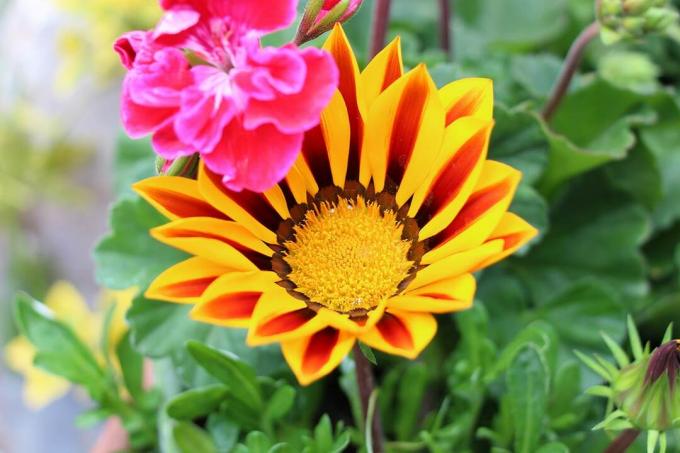
Is Gazania hardy? 6 tips for the winter
Gazania are commercially offered as annuals and not hardy. Hibernation works under ideal conditions, which require increased effort. Some varieties are considered hardy. The propagation of cuttings over the winter is an alternative to cultivating the plant perennial.



